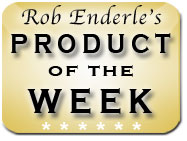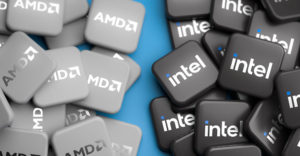
This occurred to me last Thursday when first-quarter PC sales came out. Apparently, sales are up 21 percent year-over-year and HP retook the lead from Apple in this segment. In this report, Apple’s numbers include iPads, and sales for iPads collapsed in the first quarter.
This got me thinking of the scene from Monty Python and the Holy Grail when the cart is picking up dead bodies during the Black Plague and one “corpse” not only isn’t dead but feels like dancing. It also got me thinking about almost every other trend when we said the prior technology was dead and it wasn’t.
On the corporate technology side, mainframes were dead in the 1980s. Now, three decades later, System Z, which is a mainframe, is IBM’s most profitable product. Blu-ray was going to kill off DVDs, but DVDs continue to outsell Blu-ray by a significant margin, and both are being displaced by streaming.
PCs were going to be wiped out by thin clients in the 90s, but few people have actually seen a thin client PC replacement. Current sales numbers would suggest that rather than replacing PCs, tablets and smartphones are enhancing them at the moment, and that suggests a better together strategy might be far more powerful than one based on displacement.
This suggests two things: one, that RIM was the most right of any of the vendors with its PlayBook strategy — it just executed horridly; and two, if enough people believe a thing, that belief can turn into a self-fulfilling prophecy.
You can see this in the same numbers. While the segment is up 21 percent, the tablet component is up 200 percent — so while PCs that aren’t tablets are becoming less relevant, that also supports the idea of a better together strategy.
I’ll get into all of this and close with my product of the week — an offering that helps online vendors get the 25 percent of the market they are currently missing by serving the underbanked.
What Is a Personal Computer?
Definitions tend to change over time, and I’d like to take another look at the name “PC.” When this name was created, it was to distinguish it from the mid-range and mainframe computers that were in the market at that time. They were corporate assets, and the ugly white box that now sat on your desk was, in contrast, personal.
We added keyboards to the initial Apple, eventual Commodore, and Atari computers, and they remained PCs. Apple put a screen in the Mac, and it remained a PC. We made them increasingly portable, creating Laptop PCs, and we even created a PDA and called it an “HPC,” or “handheld personal computer.”
Most of these had far less capability than the smartphone and iPad do today, and it was the smartphone that caused us to think about the product as a different class, even though it was an HPC with phone capability.
The truth is tablets, smartphones and handheld computers like the iPad touch and Samsung Galaxy Player 4 are all types of personal computer. In fact, you could argue the smaller forms are more personal than the larger forms because they are rarely shared, and sharing a traditional PC in the home is still common.
Better Together
Somehow the market got off track, because with the more limited personal computers initially there was a better together strategy. The first tablet most like the iPad was the Microsoft Mira device — one of many badly executed good ideas that have come out of that company.
Mira was a tablet that gave you access to your PC from the locations — living room, bedroom — where folks currently use iPads. The iPad proves the Mira idea was sound; it was the execution that was flawed.
Palm Pilots were a massive hit because they would sync your contacts and calendar with your PC, and the RIM BlackBerry added email and wireless to the mix and became the “Crackberry.” In both cases, what drove the success of these products — and differentiated them — was how easily they allowed you to take parts of your larger PC with you on a smaller device.
First Palm, with the Portfolio — which never shipped — and later RIM with the PlayBook attempted to take the experience from the smartphone and expand it to a bigger screen. RIM apparently missed its own meeting and tried to sell the result as a crippled iPad. It didn’t go well, but had the company positioned this properly as the best smartphone accessory a BlackBerry owner could buy, it likely would have done far better. As before, the idea was sound — the execution was horrid.
I think the market is on the cusp of something. It isn’t that tablets, smartphones, smart TVs, or smart MP3 players are replacing the PC, but that they are increasingly causing the concept to morph. What will displace the PC as we know it is a networked group of devices that will allow us to access our content where and how we want it, because they all pull from the same content sources and increasingly talk to each other.
I would also add a similar but size-optimized interface to this mix of changes. And this brings us to Windows 8.
Wrapping Up: Windows 8 in a Perfect World
Currently, this idea of a family of products working seamlessly together doesn’t exist with Apple or Microsoft. Both companies have a mix of backend services; both have different user experiences on their smartphones and large PCs; and neither has really executed a better together strategy yet. However, on the Microsoft side, this begins to change with Windows 8.
Now, what follows is the way I think it should be — but given how many times Microsoft has screwed this up over the last decade, it isn’t a prediction of how it will be.
Metro, Microsoft’s new user interface, will be primary on all Microsoft tablets, all of their phones, and, eventually, desktop and laptop PCs — certainly those that are touch-enabled. All will share the same back-end services to provide access to the same music, video, document repositories and games (with adjustments for screen size and capabilities).
You’ll be able to learn one interface and have it work on all three classes, and you’ll be able to get to your content, regardless of the device you have with you. What you do on one device will magically appear on all of your other devices.
Windows 8, coupled with Windows Phone 8, has that potential — but so does Apple’s expected move to an iOS-based platform for its laptops and desktops. Both Apple and Google are including smart TVs — currently projected to reach 70 percent of the TV market by 2016 — in their strategies. Right now, Microsoft isn’t. You know, Microsoft did TVs first, much like they did tablets and handheld computers; it would be amazing if Apple once again got them right first.
This last is the cautionary part of this: Microsoft has generally beat Apple to market with an idea, but Apple has massively out-executed Microsoft. Being first doesn’t count; getting it right first does, and with Windows 8 and Windows Phone 8, Microsoft will get to high integration first between most smart platforms. The question is whether Microsoft will get it right this time.
The PC is far from dead. It just had kids — and eventually, that new family will stop being dysfunctional and actually work together. The only question is which company will get the credit for taking the PC from the undead back to vibrant life?
Product of the Week: PayNearMe

Around 25 percent of the people in the U.S. don’t have bank accounts. This is because they are illegal immigrants, don’t trust banks, or have had massive financial problems so that banks don’t trust them. These people can’t get credit or debit cards, but they do earn money and also tend to have access to a PC.
Because of this, they can’t buy online or pay their bills online, and utilities and services increasingly aren’t equipped to take cash. In addition, any online service — from gaming to Amazon to eBay — is out of their reach, because they can’t pay digitally.
These people can use Western Union MoneyGrams or prepaid credit cards, but both have massive costs associated with them, hitting those who can afford it least the hardest. You talk about the 99 percent being screwed. This 25 percent of folks who are clearly third-class citizens are truly screwed.

PayNearMe is an interesting service that allows folks in this group to use cash to complete digital transactions. How it works is very simple, but the technology behind it is anything but.
As in making purchases with PayPal, buyers click on a link that allows them to complete the transaction. They then get a token — a bar code that can be printed or that shows up on their smartphone. They then take this token to a supporting store — mostly 7-Elevens now — show them the token, pay them the cash, and they’re done. Whatever they’ve bought or paid for is now theirs.
Everyone likes to chase folks who have a lot of money with services; few chase those who don’t without taking major advantage of them. PayNearMe is a comparatively low-priced service that gives the truly disenfranchised a way to participate and therefore, PayNearMe is my product of the week.























































Thanks Rob, but I for one don’t think the PC ever died at all. The people who say the PC is dead simply want us to believe their thinking.
When you look at the PC you realize that it is the best way to input information for others to use. Other smart items are very good at accessing this information but not in putting it. Laptops which most offices use (and are PCs anyway) are hooked to desktop PCs or monitors in offices. This is because PCs are very good at in putting information from simple word processing and emailing to complex computer aided designs.
Canonical has designed Ubuntu for Android smart phones because they realize PCs are the best way to input information.
PCs never died and will never die and if they do then who will develop stuff for the rest to access using smart units such as tablets and smart phones. Who ever believes PCs died should try doing your article on any smart phone.